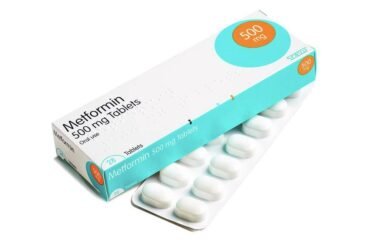The Role of Lovastatin in Cholesterol Control

Table of Contents
- Introduction to Lovastatin: An Overview
- Mechanism of Action of Lovastatin
- Effectiveness of Lovastatin in Lowering Cholesterol
- Side Effects and Safety of Lovastatin
- Conclusion: The Future of Lovastatin in Cholesterol Control
Introduction to Lovastatin: An Overview
Lovastatin is a medication commonly used for controlling cholesterol levels in the body. Classified as a statin, it is widely prescribed by healthcare professionals to help manage high cholesterol, reduce the risk of heart disease, and improve overall cardiovascular health.
Lovastatin works by inhibiting the production of cholesterol in the liver, thus lowering the total amount of cholesterol circulating in the bloodstream. By decreasing cholesterol levels, this medication helps prevent the formation of plaque in the arteries, reducing the risk of heart attacks, strokes, and other cardiovascular complications.
Here are some key points to understand about Lovastatin:
- Lovastatin is a prescription medication and should only be taken under the guidance of a healthcare professional.
- It is typically prescribed for individuals with high cholesterol levels, particularly those with the diagnosis of hypercholesterolemia.
- Lovastatin should be used as part of a comprehensive approach to managing cholesterol, which includes a healthy diet, regular exercise, and lifestyle modifications.
- It comes in the form of oral tablets and is usually taken once a day, with or without food.
- Before starting Lovastatin, it is important to inform your doctor about any pre-existing medical conditions, ongoing medications, or allergies to ensure its safe usage.
- Common side effects of Lovastatin may include muscle pain, weakness, stomach discomfort, and changes in liver function tests. However, serious side effects are rare.
- It is important to continue taking Lovastatin as prescribed, even if cholesterol levels improve, as discontinuing the medication without medical advice may lead to a rise in cholesterol levels.
- Regular monitoring of cholesterol levels and liver function tests is necessary to evaluate the effectiveness and safety of the medication.
- Pregnant women or those planning to become pregnant should avoid using Lovastatin, as it may cause harm to the developing fetus.
In conclusion, Lovastatin is a widely used medication for managing high cholesterol levels. By decreasing cholesterol production, it helps reduce the risk of cardiovascular diseases. However, it should always be used under medical supervision and in conjunction with a healthy lifestyle. Understanding its benefits, risks, and proper usage is essential for optimal cholesterol control and overall well-being.
Mechanism of Action of Lovastatin
Lovastatin is a medication belonging to the class of drugs known as statins, which are primarily used for lowering cholesterol levels in the body. It functions by inhibiting an enzyme called HMG-CoA reductase, which is involved in the production of cholesterol in the liver.
When lovastatin is administered, it enters the liver and gets converted into its active form, known as lovastatin acid. Lovastatin acid then competes with HMG-CoA reductase for binding sites, effectively blocking the enzyme’s activity. This, in turn, reduces the production of cholesterol in the liver.
The decrease in cholesterol production triggers a compensatory response in the body, leading to an increase in the number of LDL receptors on the cell surface. LDL receptors are responsible for removing low-density lipoprotein (LDL) cholesterol, commonly known as “bad” cholesterol, from the bloodstream. As a result, the elevated number of LDL receptors enhances the uptake of LDL cholesterol particles from the blood, effectively lowering its levels.
In addition to decreasing LDL cholesterol, lovastatin also exerts a favorable effect on triglyceride levels. It works by reducing the production of very-low-density lipoprotein (VLDL), which is a precursor to LDL cholesterol. By decreasing VLDL levels, lovastatin indirectly lowers triglyceride levels in the blood.
The overall impact of lovastatin on the lipid profile plays a crucial role in reducing the risk of cardiovascular diseases. By reducing LDL cholesterol and triglyceride levels while also increasing high-density lipoprotein (HDL) cholesterol, another type of cholesterol considered beneficial, lovastatin helps in managing and controlling cholesterol levels effectively.
However, it is important to note that lovastatin’s mechanism of action is just one aspect of cholesterol control. Alongside medication, lifestyle modifications such as a healthy diet, regular exercise, and smoking cessation are key for achieving optimal results. Always consult a healthcare professional before starting or making any changes to your cholesterol management regimen.
- Lovastatin inhibits the enzyme HMG-CoA reductase.
- Decreases cholesterol production in the liver.
- Increases the number of LDL receptors, aiding in LDL cholesterol removal.
- Reduces the production of VLDL, indirectly lowering triglyceride levels.
- Improves the overall lipid profile by increasing HDL cholesterol.
Effectiveness of Lovastatin in Lowering Cholesterol
Lovastatin is a widely prescribed medication that belongs to the class of statins, commonly used for managing high cholesterol levels. As a potent HMG-CoA reductase inhibitor, this drug has proven to be highly effective in reducing cholesterol synthesis in the body. Here is a look at the role of lovastatin and its effectiveness in controlling cholesterol levels.
1. Powerful Cholesterol-Lowering Properties: Lovastatin works by blocking an enzyme called HMG-CoA reductase, which plays a crucial role in cholesterol production. By inhibiting this enzyme, lovastatin reduces the amount of cholesterol synthesized in the liver, leading to a decrease in LDL (low-density lipoprotein) cholesterol commonly known as “bad” cholesterol. It also raises HDL (high-density lipoprotein) cholesterol, which is considered “good” cholesterol.
2. Clinical Studies: Research studies have established the effectiveness of lovastatin in significantly lowering cholesterol levels. In a clinical trial conducted by the National Heart, Lung, and Blood Institute, it was found that patients receiving lovastatin experienced a 29% reduction in LDL cholesterol levels compared to the placebo group. Moreover, lovastatin has shown consistent results in reducing total cholesterol and triglyceride levels, while promoting an increase in HDL cholesterol.
3. Combating Atherosclerosis: High cholesterol is a well-known risk factor for atherosclerosis, a condition characterized by the buildup of plaque in the arteries. By reducing LDL cholesterol levels, lovastatin helps to prevent the formation of plaque and decreases the risk of cardiovascular diseases such as heart attacks and strokes. Its cholesterol-lowering properties contribute significantly to improving overall heart health.
4. Additional Benefits: Apart from its primary role in lowering cholesterol, lovastatin offers several other benefits. It has been linked to reducing inflammation in the arteries, improving endothelial function, and stabilizing plaques, which further contribute to cardiovascular health. This medication has also shown potential in improving outcomes for individuals with certain genetic lipid disorders.
5. Safety and Side Effects: Lovastatin is generally safe to use under medical supervision, but it may cause certain side effects in some individuals. Common side effects include muscle pain, digestive issues, and liver function abnormalities. It is important to discuss any potential drug interactions or pre-existing medical conditions with a healthcare professional before starting lovastatin.
In conclusion, lovastatin is an effective medication for managing high cholesterol levels. It works by inhibiting cholesterol synthesis and has been proven to significantly reduce LDL cholesterol while increasing HDL cholesterol. By controlling cholesterol, lovastatin plays a vital role in preventing atherosclerosis and improving heart health. While generally safe, it is crucial to use this medication under medical supervision and be aware of possible side effects.
Side Effects and Safety of Lovastatin
Lovastatin is a commonly prescribed medication used for cholesterol control. While it has proven to be effective in managing cholesterol levels, it is essential to be aware of its potential side effects and ensure cautious usage. Here are the key considerations regarding the safety of lovastatin:
- Common Side Effects: Lovastatin may cause mild side effects that usually subside over time. These can include headache, muscle aches, nausea, diarrhea, and constipation. If these effects persist or become bothersome, it is important to consult a healthcare professional.
- Rare but Serious Side Effects: Although uncommon, lovastatin can sometimes lead to severe side effects that require immediate medical attention. These include signs of liver problems (dark urine, yellowing of the skin or eyes, persistent nausea or vomiting, abdominal pain), persistent muscle pain or weakness, and allergic reactions (rash, itching, swelling, severe dizziness, difficulty breathing).
- Drug Interactions: Lovastatin may interact with other medications and substances, potentially increasing the risk of side effects or reducing the medication’s effectiveness. It is crucial to inform your healthcare provider about all the medications, supplements, or vitamins you are taking to avoid any potential interactions.
- Precautions: To ensure the safe and effective use of lovastatin, it is important to follow these precautions:
- Avoid consuming large quantities of grapefruit juice, as it may increase your risk of experiencing lovastatin’s side effects.
- Inform your doctor or pharmacist of any pre-existing medical conditions such as liver disease, kidney disease, or diabetes.
- Pregnant and breastfeeding women should avoid using lovastatin, as its impact on fetal development and lactation is not yet fully determined.
- Regular monitoring of liver function and cholesterol levels may be necessary to ensure the medication’s effectiveness and safety.
- Emergency Situations: In case of an overdose or any severe symptoms, such as difficulty breathing or loss of consciousness, immediate medical attention is required. Be sure to contact emergency services or your local poison control center.
It is essential to remember that the benefits of lovastatin in cholesterol control usually outweigh the potential risks of side effects. However, close monitoring and communication with your healthcare provider can help ensure the safe and effective use of this medication. By following the prescribed dosage and guidelines and promptly reporting any concerns, you can continue to manage your cholesterol levels effectively.
Conclusion: The Future of Lovastatin in Cholesterol Control
Lovastatin has proven to be a highly effective medication for managing cholesterol levels, particularly in individuals with hypercholesterolemia. This statin drug has emerged as a potent tool in the fight against cardiovascular diseases, significantly reducing the risk of heart attacks and strokes. However, as we look to the future, there are certain aspects that warrant both excitement and caution regarding the role of lovastatin in cholesterol control.
- Lovastatin’s continued relevance: With the increasing prevalence of sedentary lifestyles and unhealthy dietary habits, the demand for cholesterol management drugs remains high. Lovastatin, with its ability to lower LDL cholesterol and increase HDL cholesterol levels, is expected to maintain its relevance in the coming years.
- Emerging alternatives: While lovastatin has played a vital role in cholesterol control, ongoing research is focused on the development of newer statins with enhanced efficacy and fewer side effects. These emerging alternatives may offer additional benefits and provide more options for patients who cannot tolerate or benefit from lovastatin.
- Combination therapies: Another aspect to watch for in the future is the use of lovastatin in combination with other cholesterol medications. Recent studies have suggested that utilizing multiple drugs targeting different aspects of cholesterol metabolism can lead to better outcomes, potentially reducing the reliance on higher doses of a single medication.
- Personalized medicine: As genetic research advances, the concept of personalized medicine is gaining traction. Genetic testing can identify individuals who are more likely to respond well to lovastatin or other cholesterol-lowering drugs, aiding in the selection of the most suitable medication for each patient.
- Patient education and lifestyle modifications: While medication like lovastatin can effectively control cholesterol, lifestyle modifications such as adopting a healthy diet and engaging in regular exercise play a crucial role in optimal cholesterol management. In the future, healthcare professionals must continue to emphasize the importance of these lifestyle changes alongside medication use.
Despite the promising future prospects for cholesterol control, it is essential to recognize that lovastatin, like all medications, is not without potential risks and side effects. Regular monitoring and close collaboration between patients and healthcare providers remain imperative to ensure the safe and effective use of lovastatin or its alternatives in cholesterol management.


























